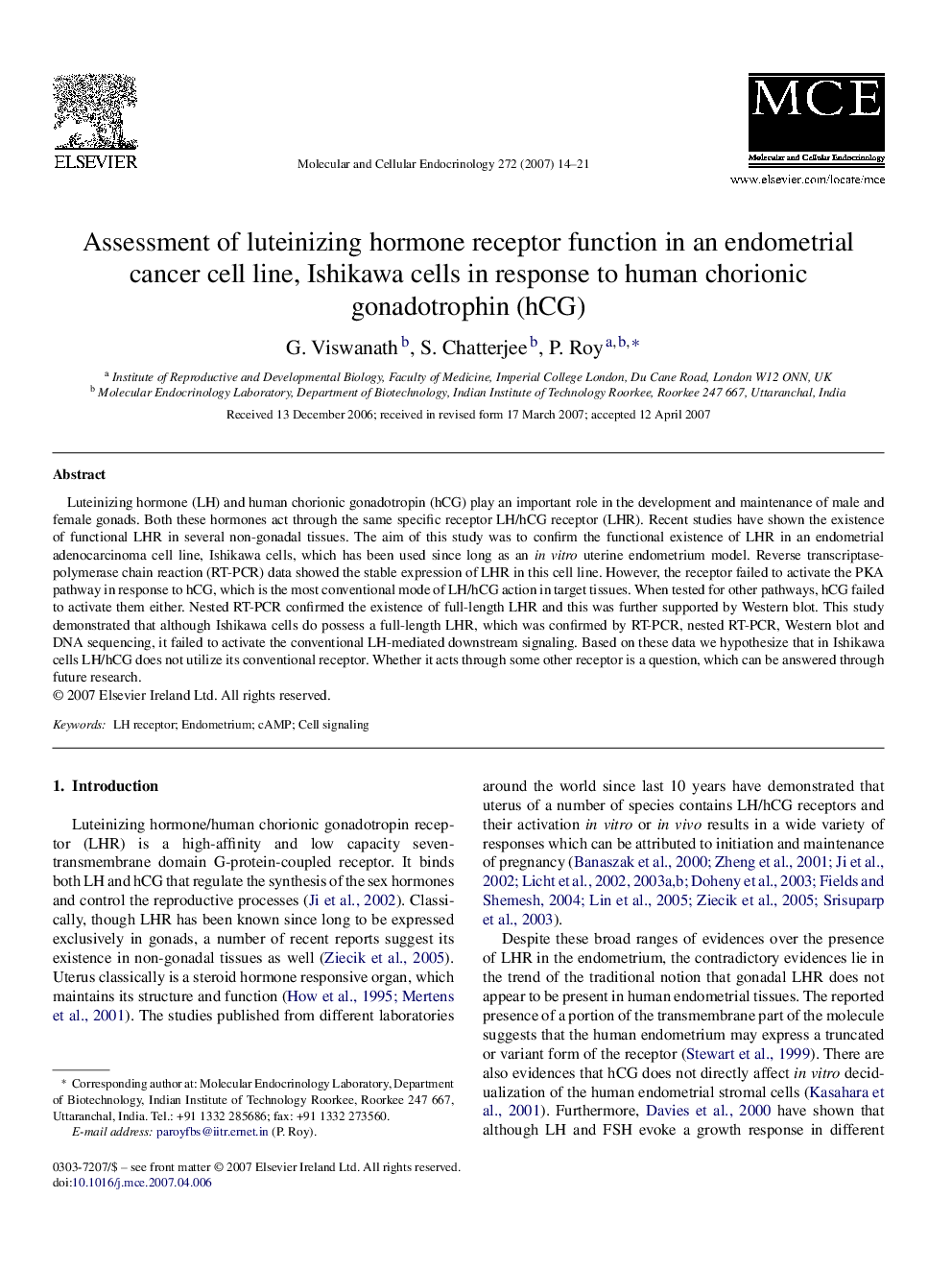| Article ID | Journal | Published Year | Pages | File Type |
|---|---|---|---|---|
| 2197905 | Molecular and Cellular Endocrinology | 2007 | 8 Pages |
Luteinizing hormone (LH) and human chorionic gonadotropin (hCG) play an important role in the development and maintenance of male and female gonads. Both these hormones act through the same specific receptor LH/hCG receptor (LHR). Recent studies have shown the existence of functional LHR in several non-gonadal tissues. The aim of this study was to confirm the functional existence of LHR in an endometrial adenocarcinoma cell line, Ishikawa cells, which has been used since long as an in vitro uterine endometrium model. Reverse transcriptase-polymerase chain reaction (RT-PCR) data showed the stable expression of LHR in this cell line. However, the receptor failed to activate the PKA pathway in response to hCG, which is the most conventional mode of LH/hCG action in target tissues. When tested for other pathways, hCG failed to activate them either. Nested RT-PCR confirmed the existence of full-length LHR and this was further supported by Western blot. This study demonstrated that although Ishikawa cells do possess a full-length LHR, which was confirmed by RT-PCR, nested RT-PCR, Western blot and DNA sequencing, it failed to activate the conventional LH-mediated downstream signaling. Based on these data we hypothesize that in Ishikawa cells LH/hCG does not utilize its conventional receptor. Whether it acts through some other receptor is a question, which can be answered through future research.
